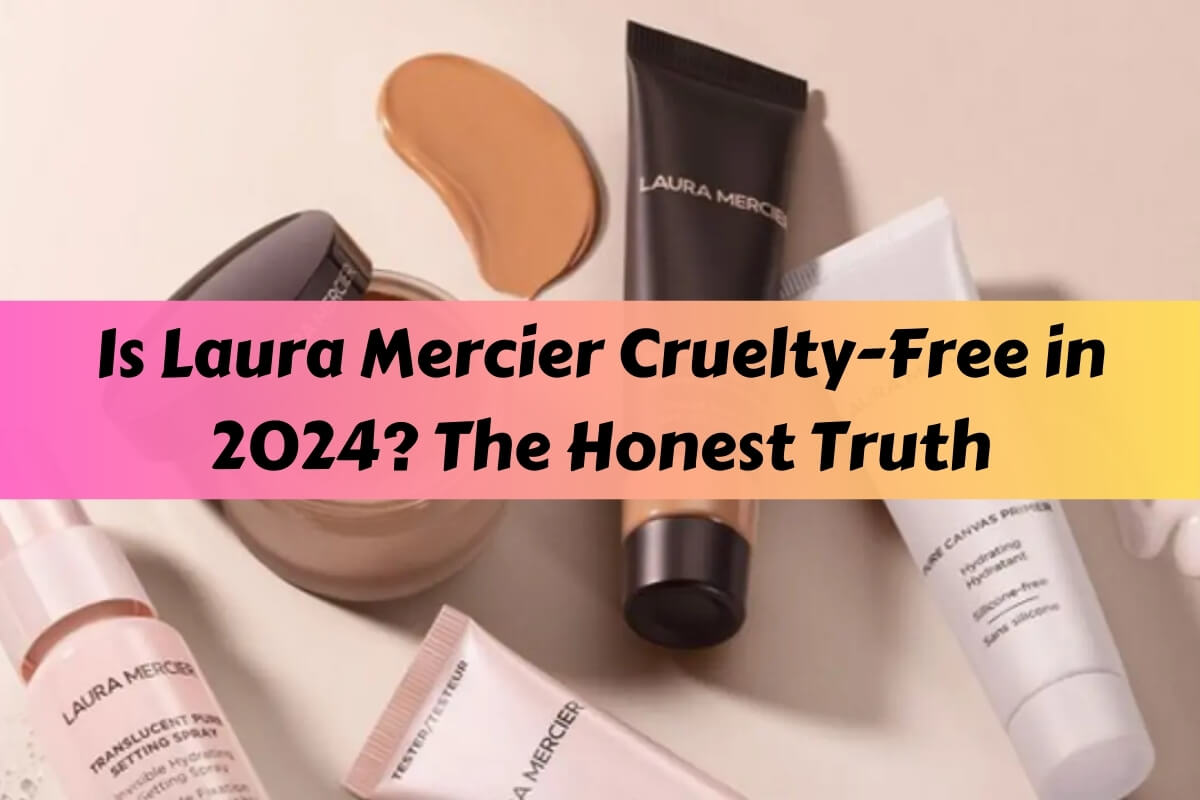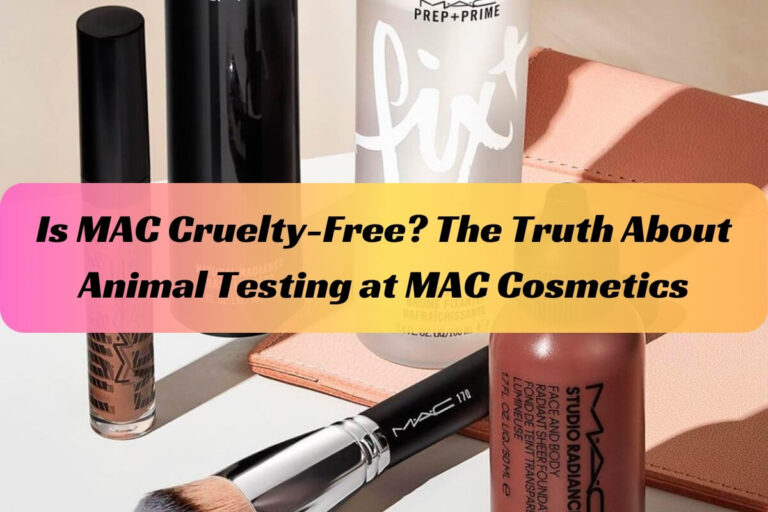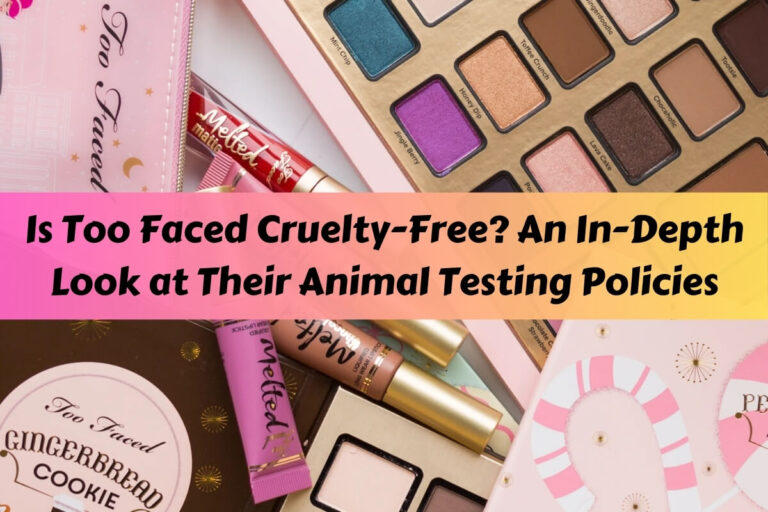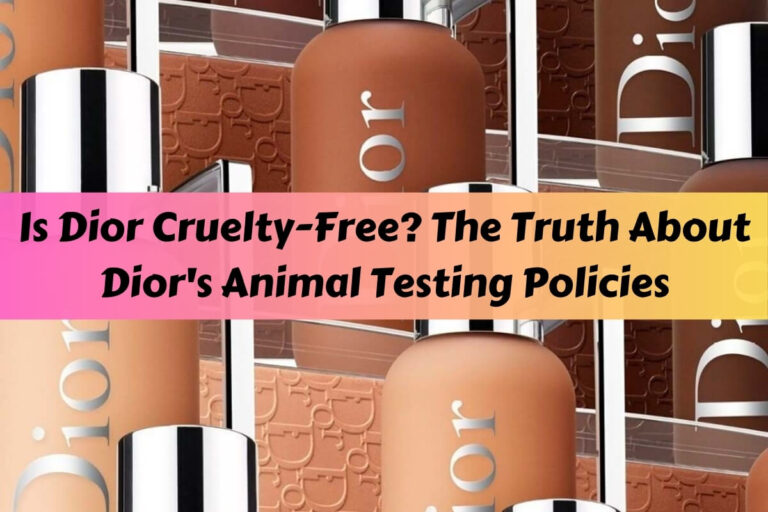Is Laura Mercier Cruelty-Free in 2024? The Honest Truth

Recent years have seen a rise in demand for ethical beauty and personal care items, especially regarding animal welfare. The cosmetics industry has faced criticism for animal testing, pushing many brands to adopt cruelty-free policies and formulations. However, navigating cruelty-free claims can be tricky, as definitions and standards vary. Laura Mercier is a brand under scrutiny. Laura Mercier cannot be considered cruelty-free based on most industry standards and expert resources.
This article examines Laura Mercier’s animal testing policies, ownership, ingredients, and certifications to understand the brand’s cruelty-free status. It also discusses what it means for a cosmetics brand to be cruelty-free, the importance of third-party certifications, and how to identify ethical alternatives.
By the end, you’ll better understand Laura Mercier’s practices and be able to make informed decisions as a conscious consumer.
What Does Cruelty-Free Mean?
Before we delve into Laura Mercier’s specific policies and practices, it’s essential to understand what the term “cruelty-free” means in the context of the cosmetics industry. At its core, a cruelty-free brand does not test its products or ingredients on animals at any stage of the production process.
This includes not only the brand’s internal testing but also ensuring that none of its suppliers or third-party laboratories engage in animal testing on its behalf. Cruelty-free brands also do not sell their products in markets where animal testing is required by law, such as mainland China (more on this later).
For many conscious consumers, purchasing from cruelty-free brands is not just a preference but a moral imperative. Animal testing has long been a contentious issue in the cosmetics industry, with countless animals subjected to painful and often lethal experiments for the sake of product development and safety testing.
Animal testing is a controversial issue, with some believing it’s necessary for product safety and others advocating for modern alternatives like in-vitro testing and computer modeling. This debate has driven demand for cruelty-free products, prompting many brands to adopt animal-friendly policies and formulations.
Laura Mercier’s Official Animal Testing Policy
To assess a brand’s cruelty-free status, the first step is to examine its official animal testing policy. On Laura Mercier’s website, the brand states: “Laura Mercier does not test on animals nor do we ask others to test on our behalf, except where required by law.”
This type of statement, which includes the caveat “except where required by law,” is often a red flag for organizations that advocate for cruelty-free practices. It typically implies that the brand may engage in animal testing when entering markets where such testing is mandated by local regulations.
One such market is mainland China, which has historically required animal testing for most cosmetic products sold within its borders. While China has recently made some changes to its animal testing laws, as we’ll discuss later, the majority of cosmetic brands selling in mainland China still cannot be considered truly cruelty-free.
Is Laura Mercier Sold in China?
The question of whether Laura Mercier products are sold in mainland China is crucial in determining the brand’s cruelty-free status. If a brand enters the Chinese market, even if it does not directly conduct animal testing itself, it is essentially consenting to and funding the animal testing required by Chinese authorities.
In researching Laura Mercier’s presence in China, evidence suggests that the brand’s products are indeed available for purchase in physical stores across mainland China. Screenshots from the brand’s Chinese website and store locator show multiple locations within mainland China where its products can be found.
While China has made some progress in updating its animal testing regulations for cosmetics, the reality is that most brands selling in mainland China are still required to have their products tested on animals to comply with local laws.
For a brand to avoid animal testing while selling in China, it must meet a stringent set of preconditions, including only selling “general” cosmetics (such as makeup, skincare, and haircare products), not introducing any new cosmetic ingredients, and having a policy in place to recall products if post-market animal testing is required.
Laura Mercier sells products in mainland China, which means the brand allows and pays for animal testing.
What the Experts Say
Reputable cruelty-free resources and advocates, such as Cruelty-Free Kitty and Ethical Elephant, have weighed in on Laura Mercier’s cruelty-free status. These organizations, which thoroughly research and vet brands’ animal testing policies and practices, have concluded that Laura Mercier cannot be considered a truly cruelty-free brand due to its presence in the Chinese market and the associated animal testing implications.
While Laura Mercier may not be directly conducting animal testing themselves, the brand’s inability to verify that its entire supply chain and third-party partners are cruelty-free raises significant concerns. Without complete transparency and assurance that no animal testing is taking place at any stage, Laura Mercier falls short of meeting the strict standards set by cruelty-free certifying bodies and advocates.
Laura Mercier’s Ownership and Parent Company
Another factor that can impact a brand’s cruelty-free status is its ownership structure and parent company’s policies. In the case of Laura Mercier, the brand is owned by the Japanese cosmetics giant Shiseido.
Shiseido’s official animal testing policy states that the company tests on animals where required by law, including for products sold in mainland China. This policy directly contradicts the core principles of being a cruelty-free brand, as it explicitly involves animal testing in certain markets.
Laura Mercier’s parent company, Shiseido, engages in animal testing, which raises concerns about Laura Mercier’s cruelty-free practices.
Vegan and Clean Beauty Status
In addition to assessing a brand’s cruelty-free credentials, many conscious consumers also consider whether a brand’s products are vegan and meet the standards of “clean” beauty.
Vegan cosmetics are formulated without any animal-derived ingredients, such as beeswax, lanolin, or carmine (a red pigment derived from crushed insects). While being cruelty-free refers to the absence of animal testing, being vegan focuses on the ingredients themselves and ensuring no animal products are used.
Unfortunately, Laura Mercier does not classify as a fully vegan brand, as some of its products contain animal-derived ingredients like beeswax and lanolin. However, the brand has made efforts to replace some animal-derived ingredients with plant-based alternatives.
As for clean beauty, the term generally refers to products that are free from potentially harmful synthetic ingredients, such as parabens, phthalates, and sulfates. While Laura Mercier does not explicitly market itself as a clean beauty brand, it is worth noting that some of its products may contain synthetic ingredients that some consumers aim to avoid.
Finding Cruelty-Free Alternatives
For those seeking truly cruelty-free, vegan, and clean beauty options, there are numerous alternative brands to consider. Organizations like Leaping Bunny and PETA offer cruelty-free certification programs, which can help consumers identify brands that adhere to strict animal-friendly standards.
Some popular cruelty-free and vegan makeup brands include Kat Von D Beauty, Tarte Cosmetics, and Hourglass Cosmetics. In the skincare realm, brands like Youth to the People, Herbivore Botanicals, and Versed have gained recognition for their ethical and sustainable practices.
When evaluating a brand’s cruelty-free claims, it’s essential to go beyond surface-level statements and dig deeper into their policies and practices. Look for transparency about their supply chain, third-party relationships, and any potential involvement with markets that require animal testing.
Additionally, cross-reference the brand’s information with reputable cruelty-free resources and certifications to ensure their claims align with industry standards.
The Future of Cruelty-Free Beauty
As consumer demand for ethical and sustainable products continues to grow, the cruelty-free beauty movement is gaining momentum. Governments and advocacy organizations around the world are pushing for legislation that would ban animal testing for cosmetics and personal care products altogether.
In recent years, several countries, including the European Union, India, and New Zealand, have implemented laws prohibiting or restricting animal testing for cosmetics. This growing legislative action reflects the shifting public sentiment towards more ethical and sustainable practices in the beauty industry.
As more nations embrace cruelty-free policies, it will become increasingly challenging for brands to maintain animal testing practices, even in markets where it is currently required by law. This could potentially lead to a global phase-out of animal testing for cosmetics, paving the way for a truly cruelty-free future.
Parallel to these legislative efforts, advocacy groups and consumers continue to raise awareness about the importance of cruelty-free products and the availability of modern, animal-free testing methods. Social media campaigns, petitions, and boycotts have proven effective in pressuring brands to adopt more ethical practices or risk losing consumer loyalty.
Furthermore, the rise of conscious consumerism has also driven innovation in the development of cruelty-free and vegan formulations. As more consumers demand animal-friendly products, brands have an incentive to invest in research and development of plant-based, sustainable ingredients and formulas.
With the cruelty-free beauty market projected to experience significant growth in the coming years, more brands will likely prioritize ethical practices to remain competitive and appeal to the growing base of conscious consumers.
Final Thoughts
After a thorough examination of Laura Mercier’s animal testing policies, ownership structure, and industry certifications, it is clear that the brand cannot be considered truly cruelty-free according to most industry standards and expert resources.
Laura Mercier’s sales in China, where animal testing is required, and their ownership by animal-testing Shiseido, question their cruelty-free claims.
For conscious consumers who prioritize animal welfare and cruelty-free practices, it is essential to look beyond surface-level claims and carefully research a brand’s policies and practices. Relying on third-party certifications and reputable cruelty-free resources can help navigate the complex landscape of ethical beauty products.
The decision to support Laura Mercier depends on personal values regarding cruelty-free practices. Growing demand for ethical products may lead more brands to adopt cruelty-free policies, ending animal testing in the cosmetics industry.






